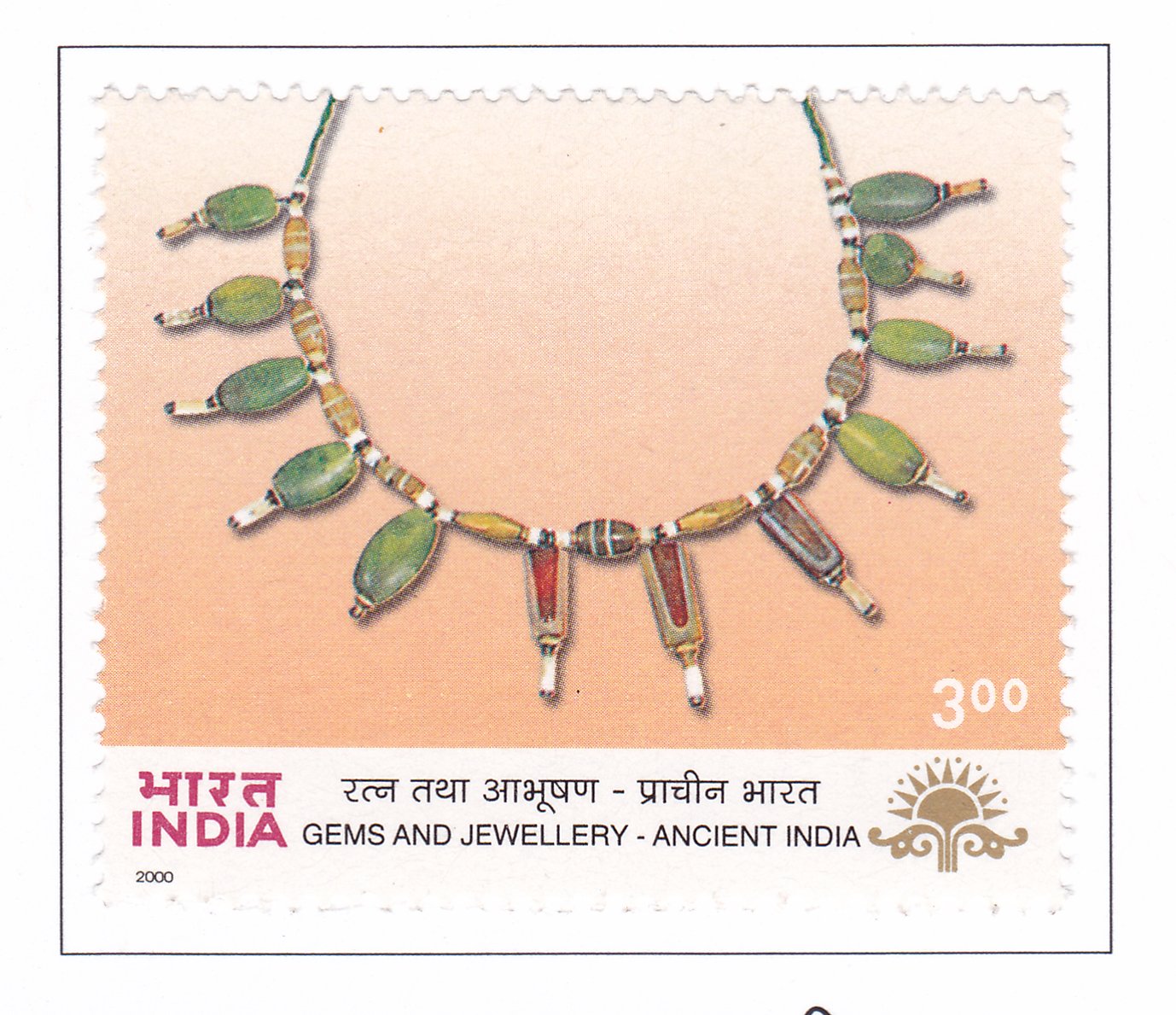Ancient Bead Necklace from Indus Valley

Technical Data
| Stamp Set | Indipex Asiana 2000 International Stamp Exhibition, Calcutta |
|---|---|
| Date of Issue | December 7, 2000 |
| Denomination | Rs. 3 |
| Quantity | 3,000,000 |
| Perforation | comb 13½ |
| Printer | Calcutta Security Printers Ltd |
| Watermark | No Watermark |
| Colors | Multicolor |
| Catalog Codes |
Michel IN 1799 Stamp Number IN 1858 Yvert et Tellier IN 1565 Stanley Gibbons IN 1966 |
| Themes | Jewelery | Philatelic Exhibitions |
Ancient Bead Necklace from Indus Valley
Table of Contents
Design Elements:
Stamp Design:
- Description: Illustrates an ancient bead necklace from the Indus Valley Civilization, showcasing the craftsmanship and materials used during that era.
- Visuals: The stamp depicts a necklace with beads of various shapes and colors, emphasizing the simplicity and elegance of early Indus Valley jewellery.
Key Features:
- Bead Types: Includes beads made from semi-precious stones, such as carnelian, lapis lazuli, turquoise, and agate, arranged in a repetitive and symmetrical pattern.
- Materials: Primarily semi-precious stones and possibly materials like shell or bone.
- Craftsmanship: Features the precision of beadwork and the ability to create visually appealing designs with limited materials.
Cultural and Historical Significance:
- Historical Context: The Indus Valley Civilization (circa 2500–1900 BCE) was one of the earliest urban cultures, with advanced craftsmanship in jewellery and beadwork. The necklace reflects the skill and artistry of this ancient civilization.
- Cultural Relevance: Represents one of the earliest examples of organized beadwork and jewellery in history, highlighting the importance of adornment in Indus Valley society.
Usage:
- Educational Tool: Provides insight into the craftsmanship and trade of the Indus Valley Civilization, showcasing early advancements in jewellery making.
- Commemorative: Celebrates the artistic and cultural achievements of the Indus Valley Civilization and acknowledges its influence on subsequent jewellery traditions.
Importance of the Commemorative Stamp Set:
- Historical Preservation: Preserves the memory of one of the earliest known styles of bead jewellery and the sophistication of ancient craftsmanship.
- Cultural Heritage: Highlights the significance of the Indus Valley Civilization in the history of jewellery making and its contribution to global art and culture.
Example of the Stamp Design:
- Main Image: Detailed depiction of the ancient bead necklace, focusing on the various beads and their arrangement.
- Background: Might include elements that reflect the Indus Valley Civilization, such as motifs or patterns found in their art and artifacts.
- Text: Includes a brief description of the bead necklace, its historical context, and the materials used.
The Commemorative Stamp Set Might Include:
- Main Stamp: Features the bead necklace from the Indus Valley, highlighting its design and historical significance.
- First Day Cover: Could include imagery related to the Indus Valley Civilization, such as seals, artifacts, or depictions of ancient urban life.
Significance:
The stamp commemorating the ancient bead necklace from the Indus Valley is a tribute to the early advancements in jewellery making and the artistic achievements of one of the world’s oldest civilizations. It serves as an important reminder of the historical roots of jewellery craftsmanship and the enduring legacy of the Indus Valley Civilization.
